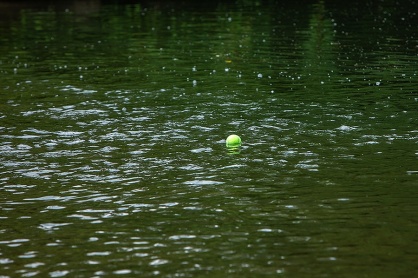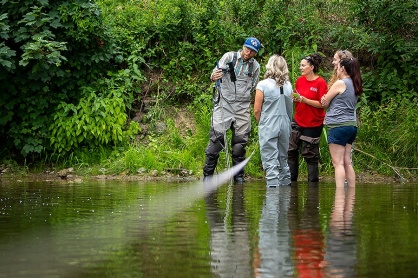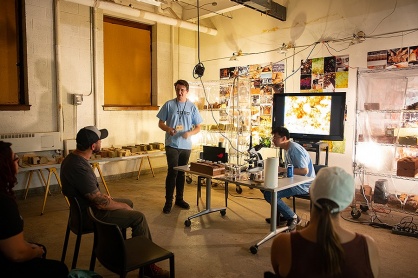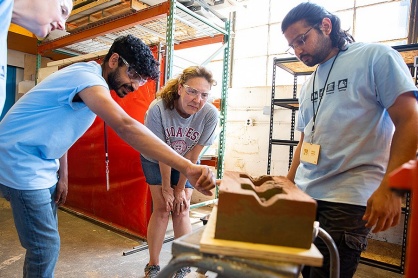Campus News
WNY teachers explore STEM topics during UB’s EarthEd week
An EarthEd teacher dissects owl pellets. Photo: Meredith Forrest Kulwicki
By JACKIE HAUSLER
Published August 4, 2022
How are masonry bricks made from clay? Why do owls eat their prey whole? What can we learn from glaciers?
Curiosity prompted a select group of Western New York teachers to explore all this and more this summer though the EarthEd Institute, a unique opportunity for public middle and high school educators to spend time at UB and learn from expert faculty.
The 2022 EarthEd Institute, held July 11-15, focused on two tracks in the fields of geology and ecology in the College of Arts and Sciences, with a special collaboration with the School of Architecture and Planning. The teachers received collegiate-level research education about the earth, used microscopes, took nature walks, dissected owl pellets and visited the Buffalo Museum of Science. All the while, they explored ways to translate UB research into STEM lesson plans for hands-on experiences in their own classrooms.
The educators, representing a variety of Western New York school districts, spent time on the North and South campuses as Nick Henshue, clinical assistant professor in the Department of Environment and Sustainability, and Kimberly Meehan, program co-coordinator, guided them on their journey.
Chris Lowry, associate professor and director of graduate studies in the Department of Geology, led the participants to measure Ellicott Creek’s hydrologic processes, also known as stream flow. Using two different methods, the STEM teachers worked with a state-of-the-art piece of equipment called an acoustic doppler flow meter and a simple tool — tennis balls — to measure the velocity in a systematic way across the entire stream cross section.
“We talked with the teachers about how this is an excellent opportunity to teach their students about integration (adding everything up). The idea is that you have a cross section of streams with different depths and velocities,” Lowry explained. “You can measure depth and velocity, then integrate to get the total flow.
“If students love science and being outdoors, geology is a great field to get into,” he added. “There are some exciting jobs in geology, and in a changing climate, it is even more critical to have strong math and science skills to prepare for the future.”
The week concluded with “SoilWorks,” a technical workshop that synthesized material and science systems through refabrication of earthen materials into low-carbon masonry assemblies.
The teachers rotated between three labs in Parker Hall on the South Campus to learn from and work with Department of Architecture faculty to quite literally understand how soil works and the features of the Western New York landscape.
The first lab demonstrated the use of advanced fabrication equipment that works with water and high pressure to erode material. The second lab utilized microscopy and very small specimen samples to explain the science and chemistry behind the function of the earth’s natural materials.
“Would you live in a house made of earth?” Christopher Romano, assistant professor of architecture, excitedly asked the group as teachers moved into the third lab. “Right now, our society makes our spaces to last 15-20 years and cause harm to ourselves and the planet doing what industry told us to do 100 years ago. The needs have changed. We have changed,” he added.
The third lab allowed participants to answer that question firsthand as they put together the knowledge they obtained into action by operating a mechanical block press machine to make earth bricks.
The EarthEd participants finished the week excited to take these lessons into their classrooms and made connections that will help them do so.
“The field experience I obtained and the different career opportunities available that I was made aware of are something I’m definitely taking back and confidently sharing with my students,” said Sandy Miller from Lancaster High School.
The EarthEd Institute is slated to continue next year, as funding is secured for 2023 and the faculty are committed to sharing the latest research from UB as the institute becomes a yearlong resource for educational support.






